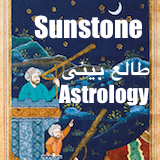The New Yorker:
Her fiction has imagined societies riddled with misogyny, oppression, and environmental havoc. These visions now feel all too real.
By Rebecca Mead
When Margaret Atwood was in her twenties, an aunt shared with her a family legend about a possible seventeenth-century forebear: Mary Webster, whose neighbors, in the Puritan town of Hadley, Massachusetts, had accused her of witchcraft. “The townspeople didn’t like her, so they strung her up,” Atwood said recently. “But it was before the age of drop hanging, and she didn’t die. She dangled there all night, and in the morning, when they came to cut the body down, she was still alive.” Webster became known as Half-Hanged Mary. The maiden name of Atwood’s grandmother was Webster, and the family tree can be traced back to John Webster, the fifth governor of Connecticut. “On Monday, my grandmother would say Mary was her ancestor, and on Wednesday she would say she wasn’t,” Atwood said. “So take your pick.”
Atwood made the artist’s pick: she chose the story. She once wrote a vivid narrative poem in the voice of Half-Hanged Mary—in Atwood’s telling, a sardonic, independent-minded crone who was targeted by neighbors “for having blue eyes and a sunburned skin . . . a weedy farm in my own name, / and a surefire cure for warts.” Webster’s grim endurance at the end of the rope (“Most will have only one death. / I will have two.”) grants her a perverse kind of freedom. She can now say anything: “The words boil out of me, / coil after coil of sinuous possibility. / The cosmos unravels from my mouth, / all fullness, all vacancy.” In 1985, Atwood made Webster one of two dedicatees of her best-known novel, “The Handmaid’s Tale,” a dystopian vision of the near future, in which the United States has become a fundamentalist theocracy, and the few women whose fertility has not been compromised by environmental pollution are forced into childbearing. The other dedicatee of “The Handmaid’s Tale” was Perry Miller, the scholar of American intellectual history; Atwood studied under him at Harvard, in the early sixties, extending her knowledge of Puritanism well beyond fireside tales.
Go to link










Comments